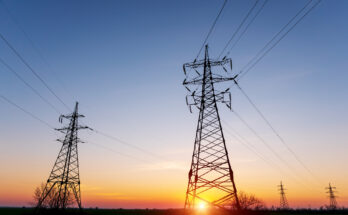The increasing contribution of fluctuating renewables will need more flexibility from power networks
Over the past year, the number of countries that have pledged to achieve net-zero emissions in the next decades has grown. Even countries that are not attempting to achieve net-zero emissions are adopting increasingly aggressive decarbonization initiatives. Attaining these goals will transform the energy industry over the next several decades. The International Energy Agency (IEA) and the European Union have been exploring how the relationship between energy supply and demand changes in low-carbon systems via the Clean Energy Transitions in Emerging Economies program.
In 2021, the International Energy Agency (IEA) released its historic global roadmap Net Zero by 2050, which predicts two simultaneous changes for the power sector as it decarbonizes.
- The first is that variable renewables will be employed more often to create low-carbon electricity.
- The second is that, as electrification becomes a more realistic alternative for decarbonization, its share of total energy use will increase.
Emerging economies are essential to global emissions reductions because they typically produce a major amount of fossil fuel production, and energy consumption is expected to climb rapidly as economies expand and more people get access to electricity.
Because variable renewable energy sources such as solar and wind power are becoming more common, power systems will need to become more adaptive. Simultaneously, conventional sources of flexibility, notably thermal power plants, will play a smaller role as decarbonisation goals mandate their decreased usage. Variable renewable generators rely on the availability of sunlight and wind, requiring the adoption of complementary technologies to ensure that the supply-demand balance is maintained at all times.
As a result, new technologies, notably batteries and other types of energy storage, biomass and thermal power plants that employ carbon capture and storage, or clean fuels, will play an increasing role in providing this flexibility. At the same time, increased power consumption and new demand sources provide a tremendous opportunity to create a society in which flexible demand is as important as flexible supply technologies.
Such a system will look quite different from today’s power sector, and these changes need a revision of our goals for a safe power system. Our understanding of demand must extend beyond the development of peak demand, and our understanding of supply must extend beyond the amount of disconnectable capacity deployed and the risk of disruption during peak supply. To conclusion, examining the system’s capacity to preserve balance during particular instances of scarcity is insufficient.
This article investigates how system planning, especially system adequacy evaluation, must adapt and expand in order for power systems to continue to provide a safe and cost-effective electricity supply throughout the energy transition. The research is based on the International Energy Agency’s modelling of China’s electrical grid.
In low-carbon systems, the link between fluctuations in power supply and demand
Power networks are becoming more complicated as the major source of energy shifts away from centralized thermal power facilities. A reliable power supply demands a variety of services. These include, in addition to supplying sufficient energy, meeting peak demand, stabilizing the power system in the event of short-term disruptions, and having sufficient flexibility to adjust to changes in supply and demand. In the Announced Pledges Scenario 2060, the IEA’s modelling for China shows that in a net-zero future, the technologies offering these services will be more diverse than they are today.
System planning is getting more difficult
The reserve margin approach has traditionally been used to analyse power system adequacy, which examines how much reserve capacity the system has at critical times, expressed as a percentage of peak demand. This strategy focuses on peak demand period(s) and demands an evaluation of the availability of different technologies during times of system stress, including as generators, network components, and demand response providers. Grid operators may then establish a target margin to ensure that the combined power and grid infrastructure is sufficient. The reserve margins desired varies depending on location.
A reserve margin calculation can’t fully capture the interplay between demand response resources and the system in a world with a high proportion of variable renewables and a high proportion of controllable consumption. This approach has limitations in a world with variable renewables and a high proportion of controllable demand.
Electricity use and temperature have a correlation
For short- and long-term demand estimates, and for adequacy models, an important area of study is the modelling of the relationship between energy demand and temperature, which is essential. In probabilistic adequacy assessments, it is more difficult to simulate demand response than producer reaction. While the consumption patterns of participating loads influence the amount of Demand Response available, generators typically have the same maximum capacity throughout the day, the availability vary according on the time of day and season.
In addition, demand response providers, unlike most generators, can only operate at a predetermined frequency range. For example, the number of activations per month or year may be limited in contracts between aggregators and their customers. If prior occurrences fall below the contractual maximums, the desire to participate in these programs may be limited. The frequency and length of demand response activation under future system circumstances may be directly informed by probabilistic assessments by comprehensively modelling system utilization under numerous scenarios. Demand response modelling may be based on more accurate demand projections.
The reliability and resilience of the power system must be considered as part of the planning process in order to assure the availability of energy. In the event of an interruption, the ability of a system to maintain or quickly return to normal operating circumstances is known as operational security. Both system stability (supported by power system inertia and operational reserves) and the capacity to maintain supply/demand balance are essential to ensuring operational security.
All of the pieces of a system must fit together in order to work properly
Resistance to short- and long-term shocks, such as those caused by catastrophic weather events with great effect but low frequency is what we mean when we talk about the electrical system’s resilience. In light of climate change’s expected rise in severe weather events, power system architecture will need to be more resilient in the future.
The increasing proportion of variable renewable energy has an impact on these three objectives. The inputs and assumptions for many of these goals are the same, despite the fact that each one calls for a different modelling method. Model synergy and information flow across modelling efforts may be improved by taking a more integrated approach to research. There are now more coordinated plans across formerly isolated areas in numerous regions.
Because investment choices may be optimized for the whole system when generating and grid planning and investment are more tightly integrated, there is a potential for cost reductions. Additionally, taking into consideration the added value that linked regions may provide one another, regional planning that spans numerous control areas can lead to more cost-effective expenditures.
Ensure that existing contract arrangements let network operators to take advantage of the system’s technical adaptability. Inflexible contract structures, such as long-term fuel purchase agreements, might limit the efficient use of strong technologies that provide flexibility. Integrating the electrical sector with other sectors is becoming more important in light of the fact that more industries are electrified.





